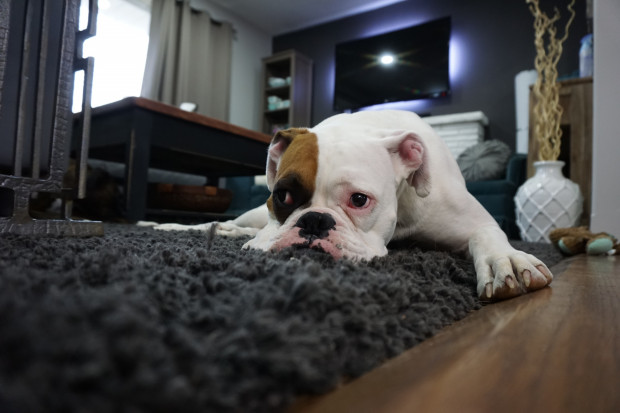- Winter-Proof Your HVAC System: What Every Homeowner Should Be Doing Right Now
- New Year, Fresh Air: 5 Simple Ways to Improve Your Home’s Air Quality in 2026
- Why Indoor Air Gets Worse in the Winter (and What You Can Do About It)
- 5 Winter HVAC Mistakes You Might Be Making (and How to Fix Them)
- Is Your HVAC Ready for Winter? 5 Things to Check Before the First Cold Snap


Millions of Americans across the country own pets. And while those pets can bring us endless joy, they can also bring along unseen irritants in the form of dander. Pet allergies are a very common thing with an estimated 10% of people who are allergic to their furry pets. While cleaning up the hair that sheds every day can be a nuisance, dander is what actually triggers an allergic reaction. Luckily, there are ways to mitigate the effects of dander, and what you may find is that your pet isn't the problem at all.
Most have heard of pet dander, but few actually know what it is and how it can affect you. Put simply, pet dander is very small, nearly microscopic pieces of skin that an animal sheds along with its hair. Coughing, red eyes, sore throat, sneezing, a runny nose can all be symptoms of an allergic reaction to pet dander. While those with those types of reactions are a great indicator of the level of dander in your home, it often goes unnoticed by those who don’t suffer from allergies. Even though you may not have allergies, limiting the amount of dander in liveable spaces can improve the air quality in your home. Dander can float around in the air of your home for a long time, where it eventually settles into the fabric of your carpet and furniture, along with any hard surface. So, even if you don’t have an allergic reaction, the thought of breathing in those skin particles every day should make you think about improving the indoor air quality of your home. If you do suffer from allergies, we’ve included a few recommendations that may help prevent the extent of your reactions.
Bathe and brush your pet weekly
Dogs and cats tend to be the biggest offenders of pet dander. Within those two groups. short haired animals often shed less than their long-haired counterparts. The long-haired breeds can produce and distribute a large amount of dander throughout your home. Curly haired breeds keep dander at bay by trapping it until they’re brushed, but even then, no pet is dander free. Bathing and brushing your pet on a weekly basis can greatly reduce the amount of dander they release into the air every day, but keep in mind that you’ll never completely rid them of it. And if your allergic reactions are extreme enough, you might want to consider a fish next time.
Change your air filters frequently
If there’s one thing we know, it’s that changing the air filters in your home on a recurring basis can greatly improve the indoor air quality of your home. We recommend changing the filters in your home at least every three months, but depending on your living situation, you may want to consider changing them more frequently, especially if you have pets. A MERV rating of at least 11 or higher will help to remove the pet dander that is floating around in the air you breathe. A MERV rating, also known as Minimum Efficiency Reporting Value is a benchmark that rates the effectiveness of your air filters.
Vacuum your carpets, furniture and clean hard surfaces frequently
As we’ve mentioned already, the pet dander that is released from your pet every day eventually settles into the fabric of your home. Anytime you walk on carpet or sit on a couch that is saturated with pet dander, it can stir up that collection which goes right back into circulation and can cause allergic reactions. Vacuuming your carpets and furniture can cut down on the volume left over for your air filters.
Keep certain areas of the home ‘off-limits’ to pets
Of course, we love our pets, but if allergies are a problem for you, keeping certain areas of the house pet-free can provide a sanctuary from all that lingering pet dander. The first place to start might be your bedroom!
In the end, what you may find is that after taking the recommendations listed above, the root cause of your allergies may not be your pet after all. Talk to an allergist to test for a variety of irritants. Often times, the remedy for your allergic reactions might be a combination of medical treatment, proper cleaning, and good pet management.
« Back to News





